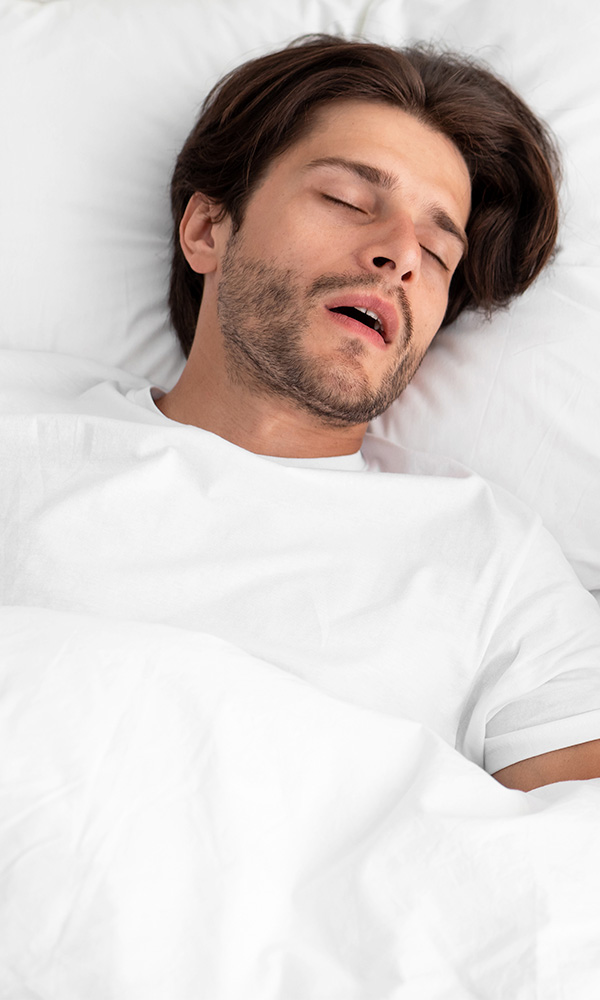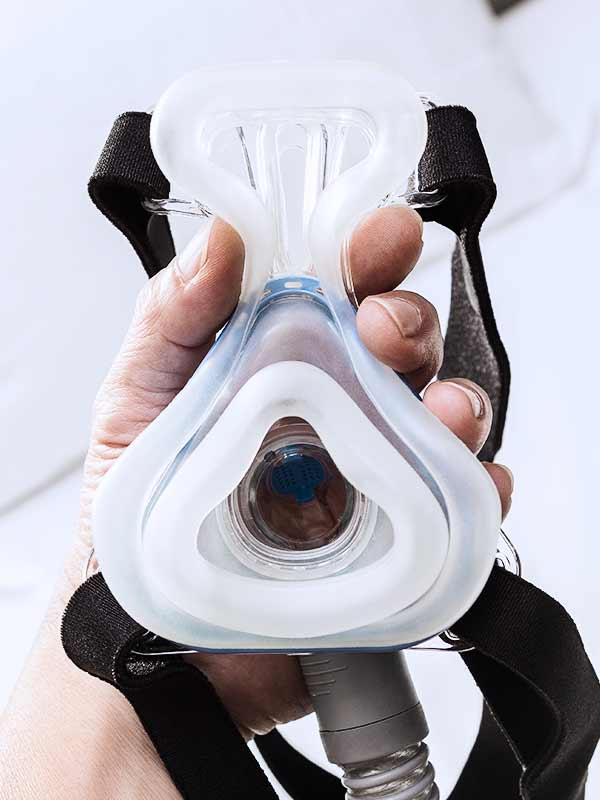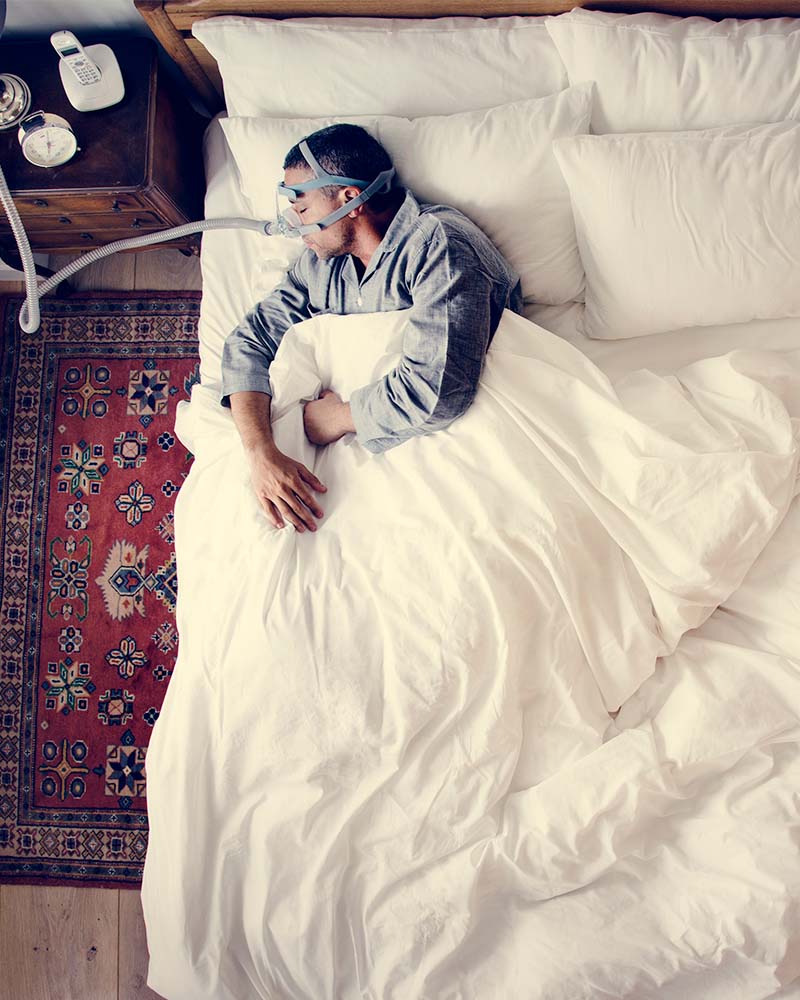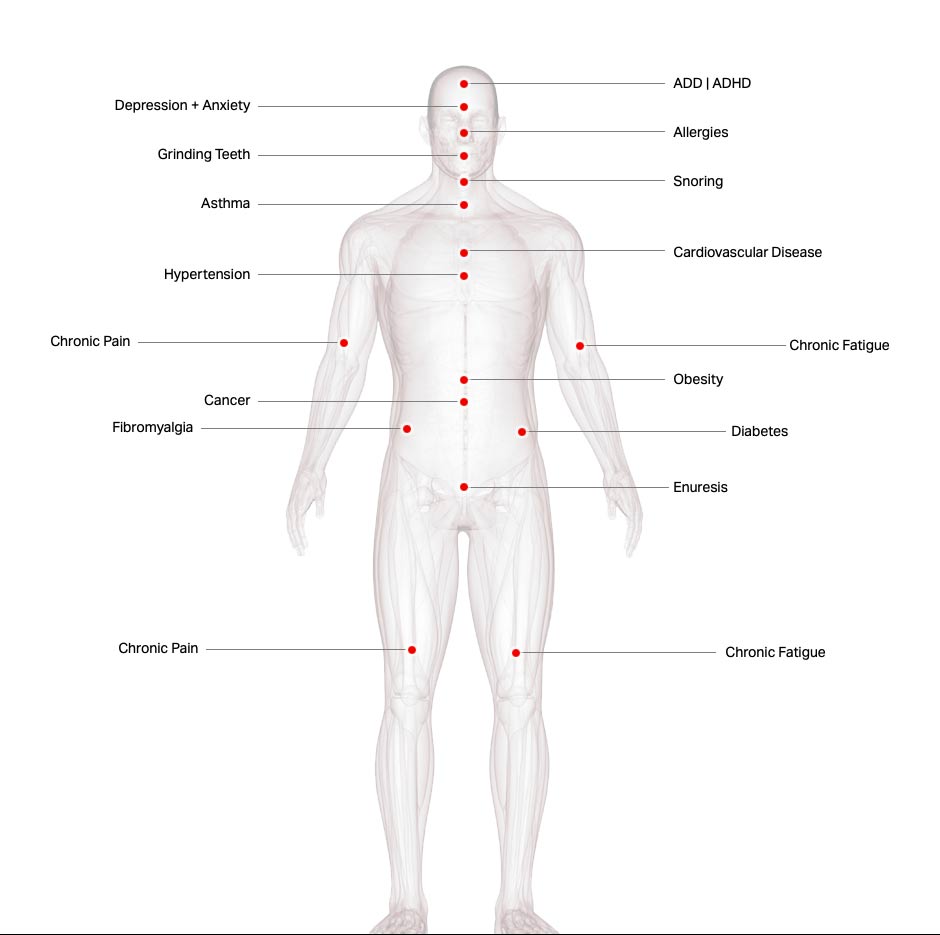Is This the End of Sleep Apnea?
22 million Americans suffer from sleep apnea, with 80% percent of the cases of moderate and severe obstructive sleep apnea undiagnosed.
If you suffer from one of the following, you may have sleep apnea:
– Snoring, choking or gasping during sleep
– Long pauses or interruptions in breathing
– Abrupt waking during the night
– Insomnia / Restless sleep
– Daytime drowsiness
These symptoms can be caused or intensified by ONE SOURCE. Schedule a free patient education meeting now to learn more!

Not Sleeping Well?
You're not alone. Over 22 million Americans have the same problem.
Benefits of VIVOS:
No need for a lifetime of treatment
The Vivos® System is safe, all natural, non-surgical and non-pharmaceutical
Shown to reduce or eliminate symptoms of OSA
The Vivos® System may be covered by health insurance and is affordable
Most patients report the treatment is comfortable
The Vivos® System may improve aesthetics as the upper and lower jaw develops
Do I Have Sleep Apnea?
Current estimates show that one in fourteen Americans suffers from sleep apnea. This condition is generally associated with loud snoring, short or stagnant breathing, and snorting noises that the patient makes while sleeping.
For those cases with diagnoses, the most common treatment is a forced air induction device called CPAP. Before I get into it, it’s important to note that despite so many people using these devices, we have neglected to uncover or treat the actual cause of these problems. And it’s quite possible, as the evidence suggests, that there is one, single cause underlying these symptoms.
That single source is sleep disturbance.
Disturbance of sleep has long been recognized as a debilitating physical condition. It can be caused by external factors, such as jet lag or a spouse’s snoring, or by physical circumstances such as chronic pain or headaches. Sleep disorders can also be caused by an underlying non-optimum physical condition called “sleep apnea” – the temporary stoppage of breathing while one is sleeping.
Sleep disturbances are a growing concern as newer studies indicate they are related to a slew of medical conditions. One common sleep disturbance, called Obstructive Sleep Apnea (OSA for short), which is associated with middle age, can actually, and is, affecting people of all ages with devastating effects.
Just a few of the health conditions that can occur due to Sleep Apnea or sleep disturbances:
– Cognitive Deficits
– Hypertension
– Learning & Memory Impairment
– Headaches
– Obesity
– Mood Disorders such as anxiety and depression
– Cardiovascular Disease
– Allergies
The Importance of Getting Enough Sleep

At all ages of life, sleep is a vital process that rejuvenates, refreshes and provides energy to each new day of living. There’s nothing worse than trying to get a good nights’ sleep when you’re spouse’s snoring is shaking the rafters!
Or you try to sleep and keep waking up and you don’t know why. You or your spouse may be one of the many individuals suffering from Obstructive Sleep Apnea (OSA) and yet you’re totally unaware of it.
Without adequate sleep, the body may not be able to rebuild valuable proteins and detox the body of toxins. A lack of sleep can cause affect one’s concentration and ability to function.
Most of us tend to feel better when we sleep enough. I know I certainly do feel better when I sleep enough, don’t you?
So, what actually causes these problems? Is it the bed? Is it a lack of minerals? Is it because I’m stressed?
The truth is, it could be one thing or it could be a hundred. To understand this better and truly get to the bottom of it, we have to look at the most common symptom – sleep apnea.
At all ages of life, sleep is a vital process that rejuvenates, refreshes and provides energy to each new day of living.
Safe, Natural Sleep Apnea Treatment. Learn More Now!
What To Know About Sleep Disorders
More About Sleep Apnea

What is Sleep Apnea?
Sleep Apnea is a condition characterized by interruptions and pauses in breathing patterns while sleeping. These erratic breathing patterns are caused by airway obstructions, such as your tongue rolling back in your throat or some of the tissues in your throat collapsing during sleep closing off your airway.
This can happen a few times a night or hundreds of times during the night, resulting in severely reduced oxygen intake and not getting the restorative sleep your body needs. In many cases, sleep apnea is the result of underdeveloped jaws. Having an airway that is too narrow for normal breathing while sleeping.
Although currently associated with middle age, research is showing that sleep apnea and the problems associated with an underdeveloped jaw can occur in both adults and children of any age. It has been difficult to diagnose due to the fact that it happens when someone is asleep.
What is Obstructive Sleep Apnea (OSA)?
Obstructive Sleep Apnea (OSA) is the most common form of sleep apnea.
OSD is the disorder caused when relaxed tissue in the throat periodically blocks the upper airway during sleep; and, as a result, the individual stops breathing for seconds or minutes at a time.
This can happen over and over throughout the night with the individual being totally unaware of it.
How Sleep Apnea is Treated
A Life Sentence Without Addressing The Cause
The CPAP Machine
Traditional treatment for a host of symptoms related to inefficient or poor sleep are, of course, reducing alcohol consumption, quitting smoking, the use of humidifiers and maintaining healthy weight.
The effectiveness of these treatments is dependent upon the patient’s willingness to make what can amount to huge changes in their life – from improving their eating habits to increasing their daily activity levels.
These changes can be moderate or drastic, but they can be difficult for a large portion of people to make. So, the next step is often taken, and that step can be for a lifetime.
Enter the CPAP or Constant Positive Air Pressure machine. Prescribed as a treatment for severe cases as well as a last resort, the CPAP forces positive air into the lungs while sleeping to help the patient breathe while sleeping.
Air obstructions can be caused by numerous maladies. Excessive weight gain, damaged airways, and injuries can lead to physical damage and obstruction of nasal airways.
Although CPAP can be effective for patients, it misses the mark on the most important aspect of treatment – it does not treat the underlying cause of the problem.
The Underling Condition
The CPAP machine has helped millions of people sleep better. What is has not done is handle the actual, underlying cause or the symptoms.
Why?
Well, the CPAP device is not designed as a cure for sleep apnea. It simply treats the most common symptom. Of course, this comes with a host of drawbacks, including having the sleep with a bulky machine on your face, every single night.
And, having to travel with a CPAP, wherever you are, whether it be on a business trip, vacation or any other overnight trip.
What’s more, studies have shown that continual use of a CPAP machine causes the air pathway muscles to deteriorate over time as you rely on it.
When use of the CPAP device is discontinued, the symptoms of sleep apnea will return. Thus, to maintain some level of normal and restful sleep, a CPAP must be worn perpetually.

Safe, Natural Sleep Apnea Treatment. Learn More Now!
Understanding Sleep Apnea
A Potentially Serious Health Condition
Traditional Treatment Options
The gold-standard treatment, called a CPAP machine, is a life sentence nobody wants to endure.
Studies show that continual use of a CPAP machine causes you to deteriorate as you rely on it and many people cannot sleep restfully attached to a CPAP.
Sounds hopeless for those suffering with this insidiously devastating condition.
CPAP is Forever
The CPAP machine has helped millions of people sleep better. What is has not done is handle the actual, underlying cause or the symptoms.
Why?
Well, the CPAP device is not designed as a cure for sleep apnea. It simply treats the most common symptom. Of course, this comes with a host of drawbacks, including having the sleep with a bulky machine on your face, every single night.
And, having to travel with said device, wherever you are, whether it be on a business trip, vacation or any other overnight trip.
What’s more, studies have shown that continual use of the CPAP machine causes the air pathway muscles to deteriorate over time as you rely on it.
When use of the CPAP device is discontinued, the symptoms of sleep apnea will return.

A CPAP machine is for life.
Once a patient has been placed on a CPAP machine, it is expected that they will never be able to sleep any other way – ever again. But, is there another way?
A Potentially Serious Health Condition
Untreated OSA can impact every organ system in the body
Untreated OSA can impact nearly every organ system in the body. When you don’t get enough sleep, your body doesn’t have the ability to replenish and rebuild. Additional symptoms include snoring, chronic pain, hypertension, depression and more.

Addressing these symptoms head on starts with your free Patient Education Meeting.
Safe, Natural Sleep Apnea Treatment. Learn More Now!

Maybe the ADD and ADHD has a cause. And maybe that cause has to do with the quality of the breathing and the sleeping overnight.
Dr. Ben Miraglia, DDS
Introducing the VIVOS Therapeutics System
The single biggest breakthrough in the treatment of mild-to-moderate sleep apnea since CPAP
The Vivos® System involves a thorough and complete diagnosis of your condition by board certified physician.
Once your physician has diagnosed sleep apnea, a specially-trained dentist will design a custom Vivos® biomimetic medical device.
You will wear your Vivos® device, as directed by your doctor, between 12 and 24 months, primarily in the evening and a t night while you sleep.
Most patients feel the effects of treatment within the first few days or weeks. During treatment, periodic adjustments to your appliance are made by your treating dentist, who often works in close collaboration with a medical sleep specialist.
Upon completion of treatment, many patients do not require further intervention.

Benefits of VIVOS:
No need for a lifetime of treatment
The Vivos® System is safe, all natural, non-surgical and non-pharmaceutical
Shown to reduce or eliminate symptoms of OSA
The Vivos® System may be covered by health insurance and is affordable
Most patients report the treatment is comfortable
The Vivos® System may improve aesthetics as the upper and lower jaw develops
Testimonials
What our patients are saying
“With good sleep comes good detox, breathing better and delivering more oxygen to their lungs, heart, brain, and throughout the body.
“We’ve seen tremendous improvements in blood pressure and in weight loss. Their tiredness has gone away, their bodies are able to recuperate and get rid of stress. They have energy and wake in the morning feeling that they’re ready to take on the day. Our appliances and protocols, over a period of 1 to 2 years of treatment, offer simple, painless help.
“With children the time factor can vary. Those who have used this appliance over six months, 2 years, four years; lots of them don’t need braces anymore, where they needed braces before. Even better than that, they’re no longer wetting the bed, they’re not discipline problems. Their energy levels are good but it’s a controlled energy not something that would be diagnosed ADD or ADHD—they are able to focus and become helpful, attentive students in school. They chill out, they’re not so skittish and upset. They can now get good sleep and that makes their lives and their parent’s lives easier.
“The Vivos Breathe Well Sleep Well treatment gives one a new, better quality of life.”
Paul T. Rodeghero, D.D.S.

Over 14,000 patients have received treatment in the Vivos System. Each month, a growing number of patients complete their Vivos System treatment with a renewed sense of vitality and wellness that comes from deep restorative sleep.
Getting Started
With The Vivos Therapeutics System
Breathe Well Sleep Well offers a compete plan to help get your and your family sleeping better and breathing better, naturally.
Getting started is easy and we have dedicated staff to answer all of your questions along the way.
Get Started in Just 4 Easy Steps:
It’s time to get started and change your life. It’s time to breathe well and sleep well.
No risk. No obligation. Just better breathing and restful sleep.




©2024 Breathe Well Sleep Well, LLC.

